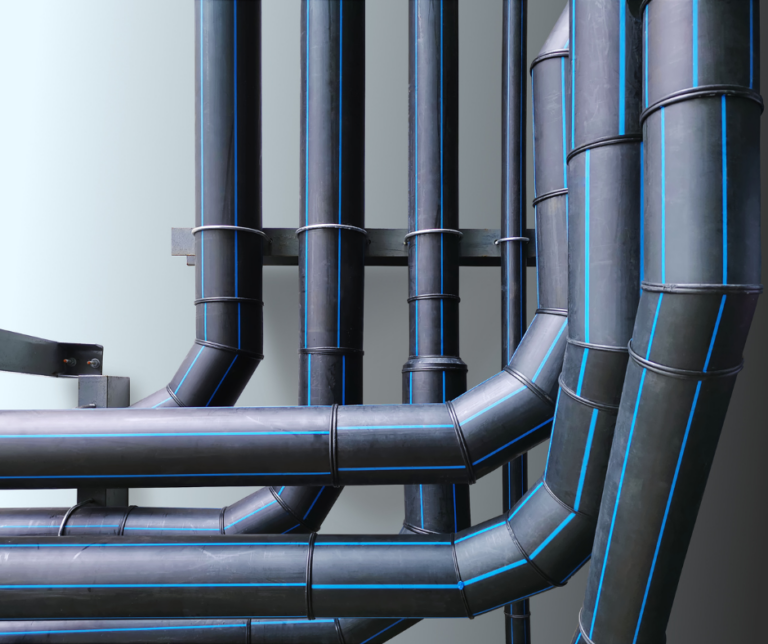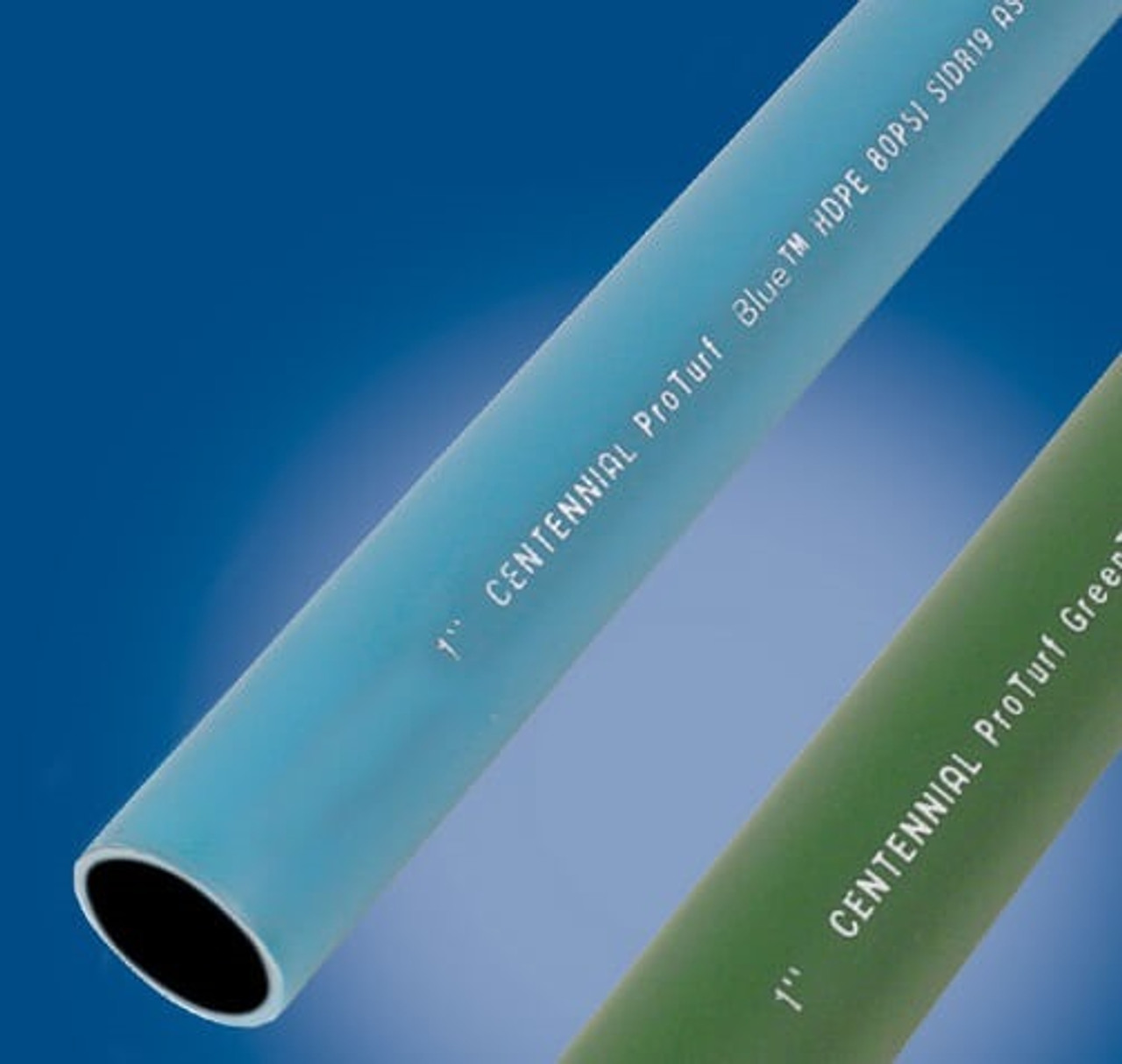Pipe Manufacturing Midland TX: From Raw Material to Finished Pipe
Discover the Production Process Behind High-Quality HDPE Pipeline and Its Applications
The manufacturing process of top notch HDPE pipes is complex and systematic. It starts with the selection of basic materials that boost efficiency. Following this, ethylene undergoes polymerization to form resin, which is then formed with extrusion. Quality assurance is vital, guaranteeing that the final product fulfills strict standards. The journey of HDPE pipelines does not end with manufacturing. Their applications across various markets expose a broader importance worth checking out.
Understanding HDPE: Qualities and Advantages

High-density polyethylene (HDPE) is a functional polycarbonate understood for its longevity and resistance to numerous environmental factors. This material shows outstanding tensile strength, making it appropriate for demanding applications. Its low-density structure contributes to a light-weight product, facilitating convenience of managing and installment. HDPE also showcases remarkable resistance to chemicals, which reduces destruction when exposed to severe materials.
The product's reduced moisture absorption better boosts its longevity, making it ideal for usage in pipelines and tank. Additionally, HDPE is resistant to ultraviolet (UV) radiation, ensuring that items keep their integrity even when revealed to sunshine. Moreover, its versatility allows for the creation of detailed forms without jeopardizing toughness. The green nature of HDPE, often stemmed from recycled products, includes to its appeal, advertising sustainable methods in manufacturing. In general, these buildings and advantages make HDPE a favored option for numerous industrial and consumer applications.
Basic Material Selection for HDPE Production
The option of basic materials for HDPE production is vital to confirm the last item satisfies the preferred specifications and quality requirements. High-density polyethylene (HDPE) is mostly generated from polymerized ethylene, originated from nonrenewable fuel sources such as natural gas or crude oil. The high quality of these feedstocks substantially affects the mechanical and thermal properties of the last HDPE.
Additives likewise play a considerable duty in boosting HDPE's efficiency, including antioxidants, UV stabilizers, and colorants, which enhance sturdiness and resistance to environmental aspects. The option process must consider not just the chemical make-up of the raw materials but likewise their handling attributes to guarantee efficient production.
In addition, the sourcing of resources need to prioritize sustainability and conformity with ecological guidelines, as responsible methods are important in today's market. Inevitably, mindful resources choice lays the foundation for creating high-grade HDPE pipes ideal for diverse applications.
The Extrusion Refine: Shaping HDPE Pipe
The extrusion procedure plays a crucial function in forming HDPE pipelines, beginning with precise product preparation techniques that assure optimal circulation and uniformity. Just as vital is the layout of the die, which straight influences the last dimensions and surface quality of the pipeline. Together, these elements add greatly to the effectiveness and high quality of HDPE pipeline production.
Product Preparation Strategies
Reliable production of HDPE pipelines begins with careful product preparation strategies, specifically the extrusion procedure. During this stage, high-density polyethylene material is first dried to eliminate moisture, guaranteeing ideal circulation attributes. The material is then fed right into the extruder, where it undertakes home heating and melting, changing right into a viscous state. This home heating procedure is thoroughly controlled to maintain the product's stability and efficiency. The liquified HDPE is required via a die, shaping it into a constant pipeline form. Proper temperature administration during extrusion is crucial, as it straight influences the product's homes and the final product top quality. As soon as shaped, the HDPE pipeline is cooled and cut to specified sizes, all set for succeeding processing and applications.
Die Style Value
Precision in die design plays an essential function in the extrusion procedure of HDPE pipes. The die works as the last shaping device, directly influencing the pipe's measurements, wall thickness, and surface coating. A properly designed die guarantees uniform material flow, reducing flaws such as abnormalities and weak points. The geometry of the die should be enhanced to suit the specific buildings of HDPE, including its thickness and thermal behavior throughout extrusion. Furthermore, the cooling price of the product as it travels through the die can markedly affect the pipe's structural honesty. Consequently, investing in advanced die modern technology is vital for manufacturers intending to create top notch HDPE pipes that my blog fulfill industry standards and customer expectations.
High Quality Control Measures in HDPE Manufacturing
Different factors influence the high quality of HDPE pipe production, effective top quality control sewer line camera inspection steps are crucial to guarantee consistency and dependability in the last product (Texas hdpe pipe manufacturer). Trick quality control methods include rigorous material evaluation, verifying that the raw polyethylene fulfills established criteria for pureness and density. During the extrusion process, parameters such as temperature level, stress, and cooling time are closely kept track of to preserve dimensional precision and architectural stability
Additionally, post-production screening is necessary; producers commonly carry out hydrostatic examinations to evaluate the pipeline's strength and resistance to pressure. Visual evaluations for surface area problems better improve high quality guarantee. Accreditation from pertinent standards organizations, like ASTM or ISO, gives an extra layer of reputation. By executing these comprehensive top quality control steps, manufacturers can lessen problems, enhance efficiency, and make sure that the HDPE pipes meet the particular requirements of numerous applications, ultimately causing client complete satisfaction and count on the item.
Applications of HDPE Pipe Across Industries
HDPE pipelines are made use of across different fields because of their longevity and convenience. In water distribution systems, they guarantee efficient distribution, while in wastewater monitoring, they give trustworthy remedies for waste transport. Furthermore, agricultural watering networks gain from HDPE's resistance to rust and adaptability, making it a suitable choice for modern-day farming techniques.

Water Distribution Solutions
A substantial number of industries rely upon high-density polyethylene (HDPE) pipes for efficient water distribution systems. Recognized for their durability and resistance to deterioration, HDPE pipes are widely utilized in metropolitan supply of water networks, farming irrigation, and commercial applications. Their lightweight nature assists in very easy handling and installation, minimizing labor costs and time. Furthermore, HDPE pipes can accommodate different pressure levels, making them suitable for both reduced and high-pressure systems. custom hdpe pipe manufacturing Midland TX. The flexibility of the material permits seamless assimilation into existing framework, minimizing the requirement for considerable excavation. In addition, HDPE's resistance to chemical leaching guarantees that the water delivered remains secure and tidy, making it a suitable choice for keeping the high quality of potable water across different fields
Wastewater Administration Solutions
Reliable water distribution systems likewise lead the means for ingenious wastewater management solutions, where high-density polyethylene (HDPE) pipes play a significant duty. Popular for their sturdiness and resistance to rust, HDPE pipes are perfect for delivering wastewater in different settings. underground water leak repair Their versatility permits easy setup in complex environments, minimizing the need for extensive excavation. Furthermore, HDPE's smooth indoor surface area lowers friction, boosting flow rates and effectiveness. These pipelines are additionally immune to chemical leaching, making sure that contaminants do not endanger the surrounding setting. Industries, municipalities, and therapy centers progressively depend on HDPE pipelines for their reliability and long life, making them a recommended option for modern-day wastewater management systems. This flexibility highlights the important relevance of HDPE pipes across numerous applications.
Agricultural Irrigation Networks
Agricultural watering networks benefit substantially from the use of high-density polyethylene (HDPE) pipes, which offer reliable and trusted water delivery to plants. HDPE pipes are light-weight, making them easy to deliver and set up, while their versatility enables numerous arrangements in diverse terrains. These pipes demonstrate excellent resistance to rust, chemicals, and UV radiation, making certain longevity in rough agricultural settings. In addition, their smooth interior surface lessens friction loss, enhancing water circulation and decreasing energy costs linked with pumping. The long life of HDPE pipes, frequently going beyond 50 years, contributes to lower upkeep and replacement expenditures. Farmers increasingly count on HDPE pipes to boost irrigation effectiveness and promote sustainable agricultural methods, ultimately leading to boosted crop yields and resource preservation.

Future Fads in HDPE Pipeline Modern Technology
As the demand for lasting and reliable facilities grows, innovations in HDPE pipeline modern technology are positioned to change numerous sectors. Emerging trends include the assimilation of clever innovations, such as sensors and IoT capabilities, which facilitate real-time monitoring of pipeline problems, decreasing upkeep prices and stopping leakages. Furthermore, the development of sophisticated manufacturing techniques, such as 3D printing, is allowing the manufacturing of complex, tailored pipe styles that deal with particular job requirements.
In addition, the focus on recycling and round economic situation methods is driving the innovation of HDPE pipelines made from recycled materials, improving sustainability. Boosted jointing methods, such as electro-fusion and mechanical fittings, are likewise enhancing setup efficiency and dependability. The growing focus on environmental policies is pressing manufacturers to embrace greener production processes, guaranteeing that HDPE pipelines not only fulfill market requirements but likewise cultivate an even more sustainable future for facilities growth.
Frequently Asked Questions
How Does HDPE Compare to Various Other Plastic Materials?
HDPE outmatches numerous various other plastic materials regarding durability, chemical resistance, and adaptability. Its reduced density and high tensile toughness make it excellent for various applications, typically exceeding options in both efficiency and longevity.
What Are the Ecological Influences of HDPE Production?
The environmental effects of HDPE production consist of greenhouse gas exhausts, power intake, and potential air pollution from making processes. Additionally, improper disposal can cause dirt and water contamination, raising issues about long-term ecological results.
Can HDPE Piping Be Reused?
Yes, HDPE pipes can be recycled. Several centers accept used HDPE for processing, changing it into new items. This reusing contributes to sustainability efforts, decreasing plastic waste while conserving resources and power in the production cycle.
What Is the Life Expectancy of HDPE Piping?

How Do Temperature Variants Impact HDPE Pipe Performance?
Temperature variations substantially impact HDPE pipeline efficiency, influencing versatility and toughness. High temperatures can result in softening, while low temperature levels may trigger brittleness, ultimately affecting the pipeline's sturdiness and suitability for various applications in diverse environments.